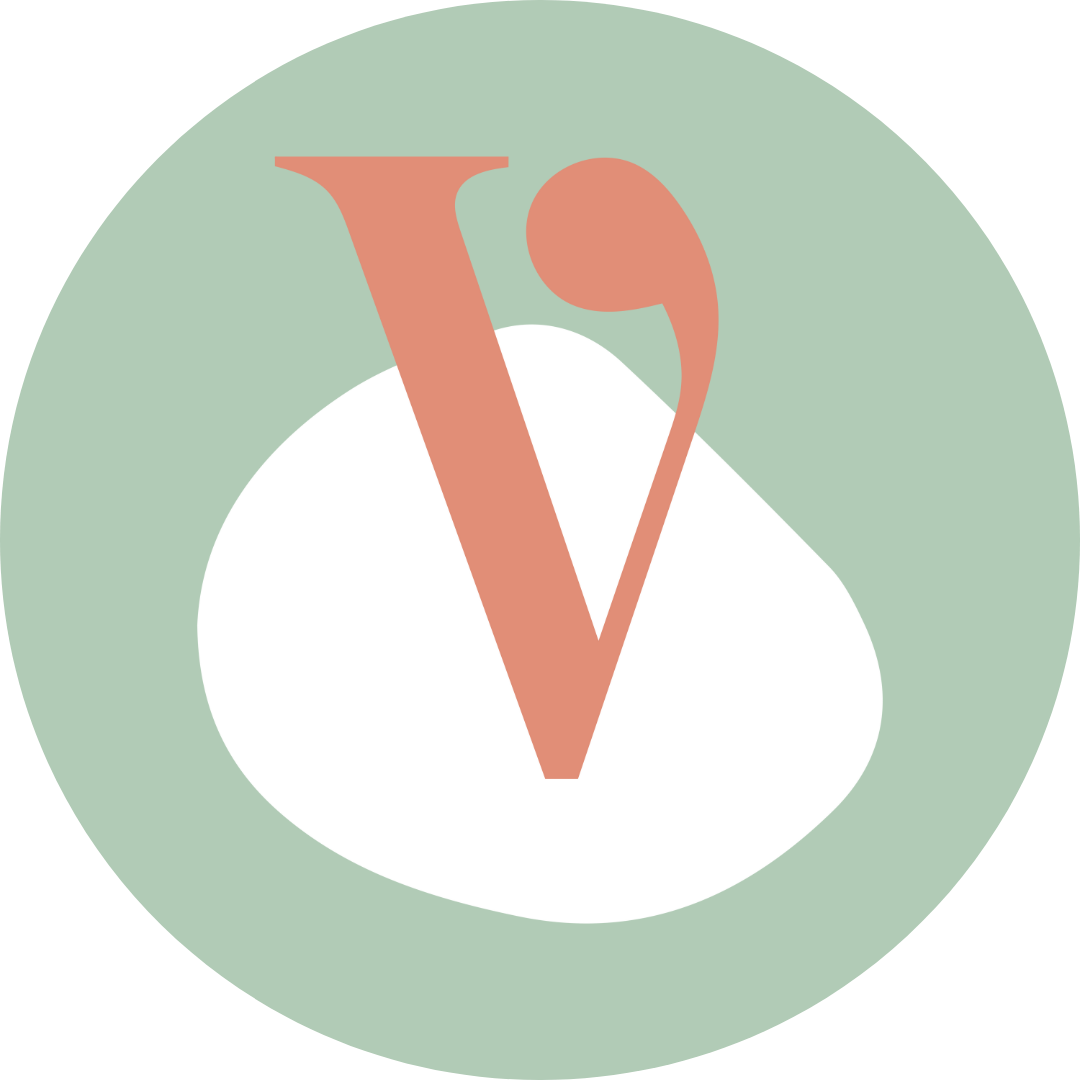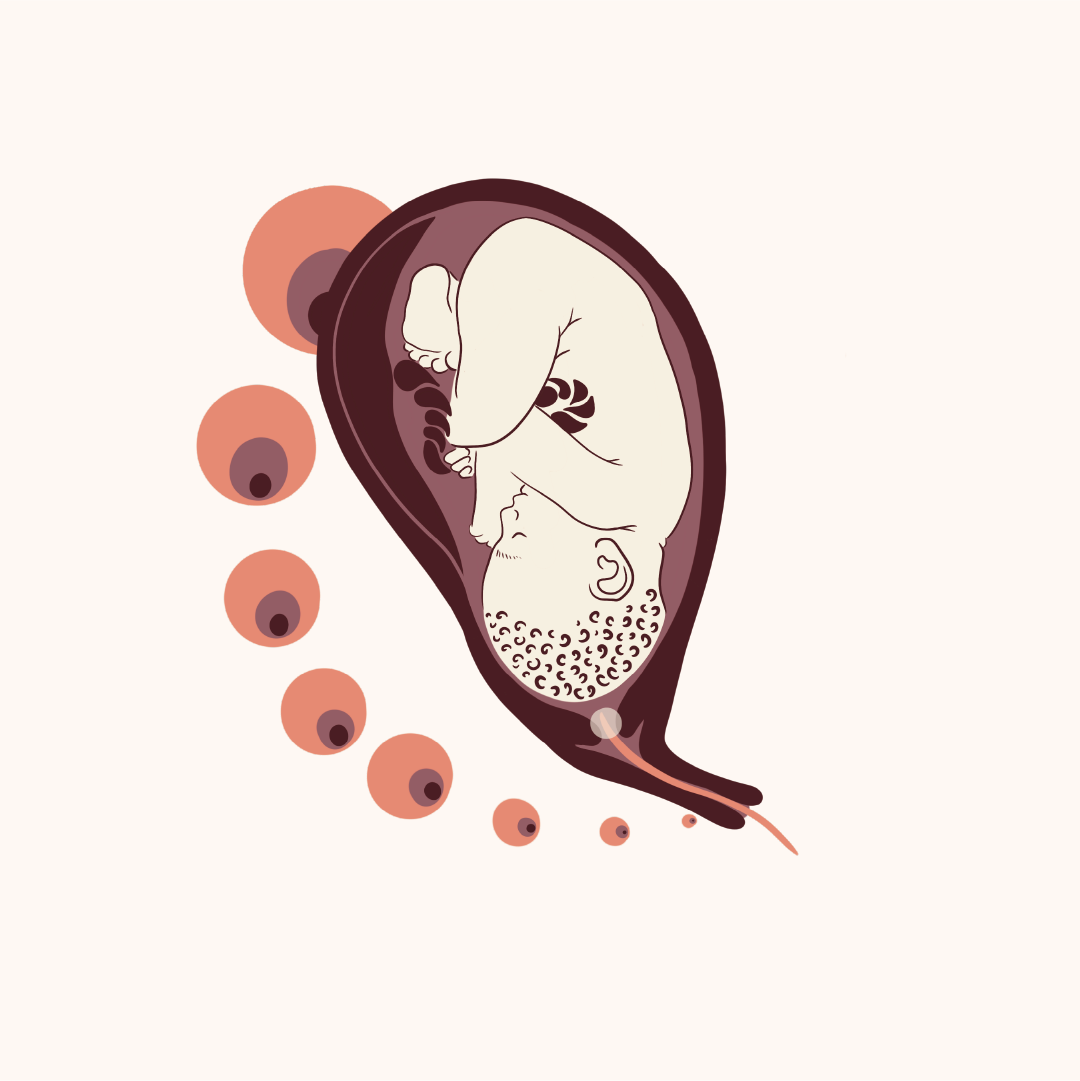
Geschreven door Marlous van der Waal
Gepubliceerd op 18 januari 2024
Laatste update juni 2025 door Margot van Dijk
In Nederland wordt gemiddeld genomen 33% van de nullipara en 25% van de multipara ingeleid (Offerhaus et al., 2023). Dit zijn gemiddelden: de percentages lopen per regio en ziekenhuis uiteen van 14 tot 41%. De redenen om een inleiding te adviseren wisselen ook per regio, waarbij niet alle indicaties zijn onderbouwd met wetenschappelijk onderzoek van goede kwaliteit.
Een inleiding heeft effect op de duur, beleving en eventuele interventies die nodig zijn bij de baring, maar kan ook gevolgen hebben voor moeder en kind op de lange termijn. Op welke manier wordt ingeleid hangt af van in hoeverre het lichaam van de zwangere al klaar is om te baren. Soms is alleen het breken van de vliezen voldoende. In andere situaties wordt medicatie of een andere mechanische manier van inleiden gebruikt.
Wat is inleiden precies? Wanneer wordt inleiden geadviseerd en waarom? Wat zijn daarvan de voor- en nadelen? En welke alternatieve methoden zijn er om weeën op te wekken? Deze en andere vragen worden beantwoord in dit artikel.
- Alfirevic, Z., Kelly, A. J., & Dowswell, T. (2009). Intravenous oxytocin alone for cervical ripening and induction of labour. Cochrane Database of Systematic Reviews. https://doi.org/10.1002/14651858.cd003246.pub2
- Belghiti, J., Kayem, G., Dupont, C., Rudigoz, R. C., Bouvier-Colle, M. H., & Deneux-Tharaux, C. (2011). Oxytocin during labour and risk of severe postpartum haemorrhage: a population-based, cohort-nested case-control study. BMJ open, 1(2), e000514. https://doi.org/10.1136/bmjopen-2011-000514
- Boulvain, M. (2005). Membrane sweeping for induction of labour - Boulvain, M - 2005 | Cochrane Library. https://www.cochranelibrary.com/cdsr/doi/10.1002/14651858.CD000451.pub2/abstract
- Budden, A., Chen, L. J., & Henry, A. (2014). High-dose versus low-dose oxytocin infusion regimens for induction of labour at term. Cochrane Database of Systematic Reviews, 2016(3). https://doi.org/10.1002/14651858.cd009701.pub2
- Buckley (2015). Hormonal Physiology of Childbearing: Evidence and Implications for Women, Babies, and Maternity Care Chen, W., Xue, J., Peprah, M., Wen, S., Walker, M., Gao, Y., & Tang, Y. (2015). A systematic review and network meta-analysis comparing the use of Foley catheters, misoprostol, and dinoprostone for cervical ripening in the induction of labour. BJOG: An International Journal of Obstetrics & Gynaecology, 123(3), 346–354. https://doi.org/10.1111/1471-0528.13456
- Christensson, K., Nilsson, B. A., Stock, S., Matthiesen, A. S., & Uvnäs‐Moberg, K. (1989). Effect of Nipple Stimulation on Uterine Activity and on Plasma Levels of Oxytocin in Full Term, Healthy, Pregnant Women. Acta Obstetricia Et Gynecologica Scandinavica, 68(3), 205–210. https://doi.org/10.3109/00016348909020990
- Dahlen, H. G., Thornton, C., Downe, S., de Jonge, A., Seijmonsbergen-Schermers, A., Tracy, S., Tracy, M., Bisits, A., & Peters, L. (2021). Intrapartum interventions and outcomes for women and children following induction of labour at term in uncomplicated pregnancies: a 16-year population-based linked data study. BMJ Open, 11(6), e047040. https://doi.org/10.1136/bmjopen-2020-047040
- Demirel, G., & Guler, H. (2015). The Effect of Uterine and Nipple Stimulation on Induction With Oxytocin and the Labor Process. Worldviews on Evidence-Based Nursing, 12(5), 273–280. https://doi.org/10.1111/wvn.12116
- Diederen, M., Gommers, J., Wilkinson, C., Turnbull, D., & Mol, B. (2018). Safety of the balloon catheter for cervical ripening in outpatient care: complications during the period from insertion to expulsion of a balloon catheter in the process of labour induction: a systematic review. BJOG: An International Journal of Obstetrics & Gynaecology, 125(9), 1086–1095. https://doi.org/10.1111/1471-0528.15047
- El-Gawad, S. A. (2014). Castor Oil Safety and Effectiveness on Labour Induction and Neonatal Outcome. ResearchGate. https://www.researchgate.net/publication/261437700_Castor_Oil_Safety_and_Effectiveness_on_Labour_Induction_and_Neonatal_Outcome
- Evans, M. (2009). Postdates pregnancy and complementary therapies. Complementary Therapies in Clinical Practice, 15(4), 220–224. https://doi.org/10.1016/j.ctcp.2009.09.002
- FMS/NVOG (2012). Hypertensieve aandoeningen in de zwangerschap. Gestel, V. I., & Roumen, F. (1998, 28 januari). “Weeënstorm” na cervixrijping met prostaglandinegel. NTvG. https://www.ntvg.nl/artikelen/weeenstorm-na-cervixrijping-met-prostaglandinegel
- Gilad, R., Hochner, H., Savitsky, B., Porat, S., & Hochner-Celnikier, D. (2018). Castor oil for induction of labor in post-date pregnancies: A randomized controlled trial. Women and Birth, 31(1), e26–e31. https://doi.org/10.1016/j.wombi.2017.06.010
- Goodarzi, B., Seijmonsbergen‐Schermers, A., van Rijn, M., Shah, N., Franx, A., & de Jonge, A. (2022). Maternal characteristics as indications for routine induction of labor: A nationwide retrospective cohort study. Birth, 49(3), 569–581. https://doi.org/10.1111/birt.12628
- Goodarzi, B. (2023). Putting risk in its place: The complexity of risk selection in maternal and newborn care. [Phd-Thesis - Research and graduation internal, Vrije Universiteit Amsterdam]. s.n.
- Hannah, M. E., Ohlsson, A., Farine, D., Hewson, S. A., Hodnett, E. D., Myhr, T. L., Wang, E. E., Weston, J. A., & Willan, A. R. (1996). Induction of labor compared with expectant management for prelabor rupture of the membranes at term. TERMPROM Study Group. The New England journal of medicine, 334(16), 1005–1010. https://doi.org/10.1056/NEJM199604183341601
- Henderson, J., & Redshaw, M. (2013). Women’s experience of induction of labor: a mixed methods study. Acta Obstetricia et Gynecologica Scandinavica, n/a-n/a. https://doi.org/10.1111/aogs.12211
- Hill, M. J., McWilliams, G. D., Garcia-Sur, D., Chen, B., Munroe, M., & Hoeldtke, N. J. (2008). The Effect of Membrane Sweeping on Prelabor Rupture of Membranes. Obstetrics & Gynecology, 111(6), 1313–1319. https://doi.org/10.1097/aog.0b013e31816fdcf3
- Insel, T. R. (2010). The Challenge of Translation in Social Neuroscience: A Review of Oxytocin, Vasopressin, and Affiliative Behavior. Neuron, 65(6), 768–779. https://doi.org/10.1016/j.neuron.2010.03.005
- Jobst, A., Krause, D., Maiwald, C., Härtl, K., Myint, A. M., Kästner, R., Obermeier, M., Padberg, F., Brücklmeier, B., Weidinger, E., Kieper, S., Schwarz, M., Zill, P., & Müller, N. (2016). Oxytocin course over pregnancy and postpartum period and the association with postpartum depressive symptoms. Archives of women’s mental health, 19(4), 571–579. https://doi.org/10.1007/s00737-016-0644-2
- Jozwiak, M, ten Eikelder, M., Rengerink, K., de Groot, C., Feitsma, H., Spaanderman, M., van Pampus, M., de Leeuw, J., Mol, B., Bloemenkamp, K., . (2013). Foley Catheter versus Vaginal Misoprostol: Randomized Controlled Trial (PROBAAT-M Study) and Systematic Review and Meta-Analysis of Literature. American Journal of Perinatology, 31(02), 145–156. https://doi.org/10.1055/s-0033-1341573
- Foley Catheter versus Vaginal Misoprostol: Randomized Controlled Trial (PROBAAT-M Study) and Systematic Review and Meta-Analysis of Literature
- Kavanagh, J., Kelly, A. J., & Thomas, J. (2005). Breast stimulation for cervical ripening and induction of labour. Cochrane Database of Systematic Reviews, 2010(1). https://doi.org/10.1002/14651858.cd003392.pub2
- Kavanagh, J., Kelly, A. J., & Thomas, J. (2001). Sexual intercourse for cervical ripening and induction of labour. Cochrane Database of Systematic Reviews. https://doi.org/10.1002/14651858.cd003093
- Kelly, A. J., Kavanagh, J., & Thomas, J. (2013). Castor oil, bath and/or enema for cervical priming and induction of labour. Cochrane Database of Systematic Reviews. https://doi.org/10.1002/14651858.cd003099.pub2
- KNOV (2011). Standaard Hypertensieve aandoeningen tijdens zwangerschap, bevalling en kraamperiode. Aanbevelingen voor risicoselectie, diagnostiek en beleid. KNOV (2019). Factsheet Inleiden van de baring.
- KNOV (2017). Factsheet Positieve discongruentie Lamont, K., Scott, N. W., Jones, G. T., & Bhattacharya, S. (2015). Risk of recurrent stillbirth: systematic review and meta-analysis. BMJ, 350(jun23 3), h3080–h3080. https://doi.org/10.1136/bmj.h3080
- de Miranda, E., van der Bom, J., Bonsel, G., Bleker, O., & Rosendaal, F. (2006). Membrane sweeping and prevention of post-term pregnancy in low-risk pregnancies: a randomised controlled trial. BJOG: An International Journal of Obstetrics and Gynaecology, 113(4), 402–408. https://doi.org/10.1111/j.1471-0528.2006.00870.x
- Moberg, U. K. (z.d.). De Oxytocine factor: benut het hormoon van onthaasting, genezing en verbondenheid. Thoeris, Uitgeverij. Moura, D., Canavarro, M. C., & Figueiredo-Braga, M. (2016). Oxytocin and depression in the perinatal period-a systematic review. Archives of women’s mental health, 19(4), 561–570. https://doi.org/10.1007/s00737-016-0643-3
- NICE (2012). Inducing labour. NICE guideline. Overview | Inducing labour | Guidance | NICE
- Nipple stimulation for labor augmentation. (1990, 1 juli). PubMed. https://pubmed.ncbi.nlm.nih.gov/2198350/
- NVOG (2006). Richtlijn inductie van de baring
- NVOG (2020). Richtlijn Methoden van inductie van de baring 2.0. NVOG (2018). Richtlijn Diabetes Mellitus en zwangerschap 3.0.
- NVOG/KNOV (2013). Verminderde kindsbewegingen tijdens de zwangerschap. NVOG (2011). Richtlijn meerlingzwangerschap.
- NVOG (2011). Zwangerschapscholestase. Monodisciplinaire richtlijn. https://www.nvog.nl/wp-content/uploads/2018/08/Zwangerschapscholestase-NVOG-23-3-2011.pdf
- Offerhaus, P., van Haaren-Ten Haken, T. M., Keulen, J. K. J., de Jong, J. D., Brabers, A. E. M., Verhoeven, C. J. M., Scheepers, H. C. J., & Nieuwenhuijze, M. (2023). Regional practice variation in induction of labor in the Netherlands: Does it matter? A multilevel analysis of the association between induction rates and perinatal and maternal outcomes. PloS one, 18(6), e0286863. https://doi.org/10.1371/journal.pone.0286863
- Omar, N., Tan, P., Sabir, N., Yusop, E., & Omar, S. (2012). Coitus to expedite the onset of labour: a randomised trial. BJOG: An International Journal of Obstetrics & Gynaecology, 120(3), 338–345. https://doi.org/10.1111/1471-0528.12054
- Peristat. (z.d.). Geraadpleegd op 15 mei 2023, van https://peristat.nl
- Peters, L. L., Thornton, C., de Jonge, A., Khashan, A., Tracy, M., Downe, S., Feijen-de Jong, E. I., & Dahlen, H. G. (2018). The effect of medical and operative birth interventions on child health outcomes in the first 28 days and up to 5 years of age: A linked data population-based cohort study. Birth, 45(4), 347–357. https://doi.org/10.1111/birt.12348
- Pintucci, A., Meregalli, V., Colombo, P., & Fiorilli, A. (2014). Premature rupture of membranes at term in low risk women: how long should we wait in the "latent phase". Journal of perinatal medicine, 42(2), 189–196. https://doi.org/10.1515/jpm-2013-0017
- RCOG (2001). Induction of labour. Evidence-based Clinical Guideline Number 9. Reed, R. (2019, 7 augustus). Induction: a step by step guide. MidwifeThinking. https://midwifethinking.com/2015/03/18/induction-a-step-by-step-guide/
- Reed, R. (2019). Why Induction Matters (Pinter & Martin Why It Matters, 14) (1ste editie). Pinter & Martin.
- Rijnders, M.E.B. (2011). Interventions in midwife led care in the Netherlands to achieve optimal birth outcomes: effects and women’s experiences. Microsoft Word - Proefschrift totaal paperback definitief _3_.docx (uva.nl)
- Saccone, G., Ciardulli, A., Baxter, J. K., Quiñones, J. N., Diven, L. C., Pinar, B., Maruotti, G. M., Martinelli, P., & Berghella, V. (2017). Discontinuing Oxytocin Infusion in the Active Phase of Labor. Obstetrics & Gynecology, 130(5), 1090–1096. https://doi.org/10.1097/aog.0000000000002325
- Smith, C. A., Armour, M., & Dahlen, H. G. (2017). Acupuncture or acupressure for induction of labour. Cochrane Database of Systematic Reviews, 2017(10). https://doi.org/10.1002/14651858.cd002962.pub4
- Schwarz, C., Gross, M.M., Heusser, P., Berger, B. (2016). Women’s perceptions of induction of labour outcomes: Results of an online-survey in Germany. Mifwifery. 2016 Apr;35:3-10. https://doi.org/10.1016/j.midw.2016.02.002
- Selo-Ojeme, D., Rogers, C., Mohanty, A., Zaidi, N., Villar, R., & Shangaris, P. (2010). Is induced labour in the nullipara associated with more maternal and perinatal morbidity? Archives of Gynecology and Obstetrics, 284(2), 337–341. https://doi.org/10.1007/s00404-010-1671-2
- Smith, C. A. (2003). Homoeopathy for induction of labour. Cochrane Database of Systematic Reviews, 2010(3). https://doi.org/10.1002/14651858.cd003399
- Takács, L., Seidlerová, J. M., Štěrbová, Z., Čepický, P., & Havlíček, J. (2019). The effects of intrapartum synthetic oxytocin on maternal postpartum mood: findings from a prospective observational study. Archives of women’s mental health, 22(4), 485–491. https://doi.org/10.1007/s00737-018-0913-3
- Thomas, J., Fairclough, A., Kavanagh, J., & Kelly, A. J. (2014). Vaginal prostaglandin (PGE2 and PGF2a) for induction of labour at term. Cochrane Database of Systematic Reviews. https://doi.org/10.1002/14651858.cd003101.pub3
- Thul, T. A., Corwin, E. J., Carlson, N. S., Brennan, P. A., & Young, L. J. (2020). Oxytocin and postpartum depression: A systematic review. Psychoneuroendocrinology, 120, 104793. https://doi.org/10.1016/j.psyneuen.2020.104793
- Tunaru, S., Althoff, T. F., Nüsing, R. M., Diener, M., & Offermanns, S. (2012). Castor oil induces laxation and uterus contraction via ricinoleic acid activating prostaglandin EP 3 receptors. Proceedings of the National Academy of Sciences of the United States of America, 109(23), 9179–9184. https://doi.org/10.1073/pnas.1201627109
- Waugh, A., & Grant, A. (2021). Ross en Wilson Anatomie en Fysiologie in gezondheid en ziekte (13th edition). Elsevier Gezondheidszorg.
- WHO (2018). WHO recommendations on induction of labour at or beyond term. WHO recommendations for augmentation of labour [Internet]. Geneve: World Health Organisation; 2014 p. 20-21. Available from: https://apps.who.int/iris/handle/10665/112826
- Wolfhagen, F. H. J., Engelkens, H. J. H., & Van Buren, H. R. (1998). De pathofysiologie en behandeling van cholestatische jeuk. Ned Tijdschr Geneesk, 142, 688-692. https://www.ntvg.nl/artikelen/de-pathofysiologie-en-behandeling-van-cholestatische-jeuk#LIT6
- Zorginstituut Nederland. (2023, 30 juni). Farmacotherapeutisch Kompas. https://www.farmacotherapeutischkompas.nl/
>

Reacties
Je moet ingelogd zijn op om een reactie te plaatsen.



Als je moet worden ingeleid, maar je wil geen synthetische oxytocine. Hoe lang zou je dan kunnen wachten met het toedienen daarvan nadat de vliezen worden gebroken?
Hi Romy, bedankt voor je vraag! In hoofdstuk 1 staat dat de inleiding uit drie stappen bestaat, waarvan de derde de weeën opwekken is. Dit kan eventueel ook zonder oxytocine: “Een andere methode om de weeën op te wekken is het inbrengen van prostaglandine in de vorm van een tablet of gel in de vagina. Dit gebeurt op dezelfde wijze als eerder beschreven bij het rijpen van de cervix”. Voor hoelang je kunt wachten met het toedienen van oxytocine vanaf het breken van je vliezen, kun je kijken naar het artikel “Langdurig gebroken vliezen”, waarin het gaat over het infectiegevaar bij afwachten (conclusie: valt mee, haha). Je kunt zelf ook nog invloed uitoefenen op hoe snel de dosering van de oxytocine omhoog gaat, of aangeven dat je daarvan op de hoogte gehouden wilt worden en inspraak in wilt. In hst 7 van dit artikel staan ook nog alternatieven voor inleiden, wellicht heb je daar ook wat aan!
Als je oxytocine interessant vindt, hebben we ook een webinar over Oxytocine, die is misschien boeiend te kijken. En kijk ook eens naar het artikel Rechten en plichten in de geboortezorg. Je mag in principe alle interventies weigeren, dus niks ‘moet’. En als je wat uitgebreider advies wilt kun je overwegen deel te nemen aan het vragen(v)uur met Annemieke! De eerstvolgende is 12 september, je kunt van tevoren je vraag indienen via Agenda.
Laat maar weten als je nog meer vragen hebt! Groetjes, Simone